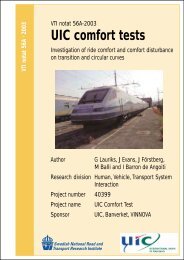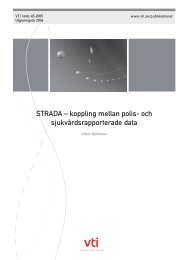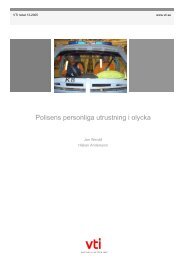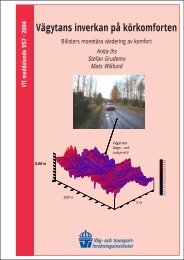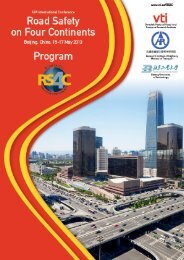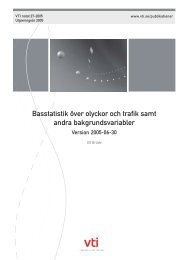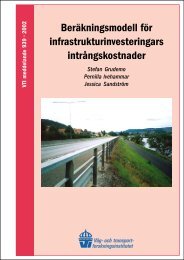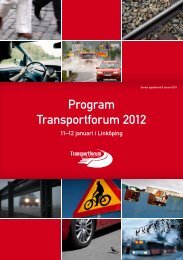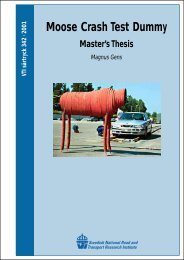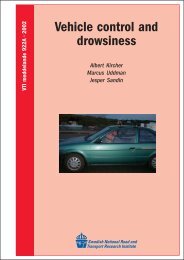Kollektivtrafik i storstad â undviker människor att resa pÃ¥ grund av ...
Kollektivtrafik i storstad â undviker människor att resa pÃ¥ grund av ...
Kollektivtrafik i storstad â undviker människor att resa pÃ¥ grund av ...
You also want an ePaper? Increase the reach of your titles
YUMPU automatically turns print PDFs into web optimized ePapers that Google loves.
the risk of being involved in traffic accidents with car as greater than with thepublic transport modes. The results also show that the respondents worry moreoften and rate the risk of being bothered, threatened or <strong>att</strong>acked as greater whentr<strong>av</strong>elling with the public modes of transportation than with car. In sum, theseresults suggest that perceived risk and worry of being bothered, threatened or<strong>att</strong>acked when tr<strong>av</strong>elling with any given mode of transportation might h<strong>av</strong>e alarger impact on perceived <strong>att</strong>ractiveness of that transport mode than do perceivedrisk and worry of being involved in traffic accidents with that same mode oftransportation.The participants stated that they had felt unsafe more often when tr<strong>av</strong>ellingwith commuter train and subway than when tr<strong>av</strong>elling with the remainingtransport modes.Women stated that they worry more often and rate the risk of being threatenedas greater with city bus than did the men. The women also stated that they worrymore often of being bothered, threatened or <strong>att</strong>acked when tr<strong>av</strong>elling with tramthan do the men, and that they more often felt unsafe when tr<strong>av</strong>elling with thesemodes of transportation.Finally the results show that different circumstances (particularity walkingthrough a pedestrian tunnel, the bus stop etc being remotely situated or situatednext to a park/forest) were considered to contribute to feelings of unsafely whenwalking to and waiting at the bus stop etc. Also, when tr<strong>av</strong>elling with the differentpublic transport modes the participants stated that they felt unsafe ifdrivers/personnel do not supervise their vehicle, if it’s a Friday or Saturdayevening or if they are tr<strong>av</strong>elling alone. Women stated to a higher extent than menthat different circumstances contribute to feelings of unsafely when walking toand waiting at the bus stop etc. as well as when tr<strong>av</strong>elling with different publictransport modes.The present results indicate that perceived <strong>att</strong>ractiveness of different transportmodes might be affected to a higher extent by perceived risks and worry of beingbothered, threatened or <strong>att</strong>acked than perceived risks and worry of being involvedin traffic accidents. The participants in Stockholm h<strong>av</strong>e a more positive <strong>att</strong>itudetowards tram than towards regional bus and commuter train. This result was notobtained in the study conducted in Norrköping. It is possible that people’s positive<strong>att</strong>itude towards tram is based on nostalgic reasons and on a successfulintroduction of Tvärbanan in Stockholm. Further, there are reasons to assume th<strong>att</strong>he role which tram plays in the transport system differs in Gothenburg comparedto Norrköping and Stockholm. The extent to which this role affects perceived<strong>att</strong>ractiveness will be further investigated in a fort coming study conducted inGothenburg.8 VTI meddelande 941



